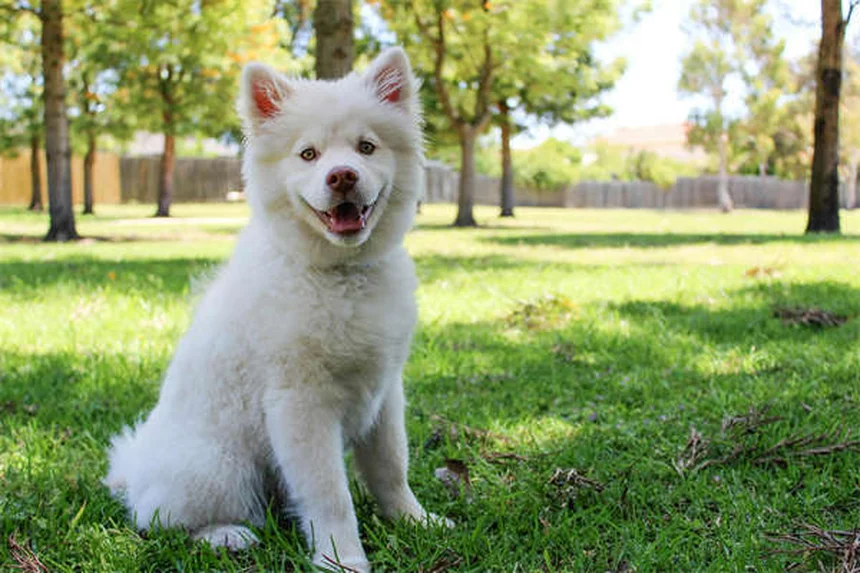Wondering what dog calming products actually work? Here's the straight answer: While many products claim to reduce anxiety in dogs, only a handful have solid scientific backing. After digging through dozens of studies and talking with veterinarians, I've found that products containing alpha-casozepine, L-theanine, or dog appeasing pheromones show the most promise.
Let me tell you why this matters. If you're like me, seeing your pup stressed during thunderstorms or when you leave the house is heartbreaking. But here's the thing - not all anxiety solutions are created equal. Some work through the placebo effect (where we think they're helping when they're really not), while others have genuine research showing they can make a difference.
In this guide, we'll cut through the hype and focus on what actually helps anxious dogs based on clinical studies. I'll share which ingredients to look for, which products veterinarians recommend, and how to combine them for maximum effect. Because at the end of the day, our goal is the same - to help our furry friends feel safe and secure.
E.g. :Dog Aggression Explained: Signs, Causes & How to Stop It
- 1、Understanding Dog Anxiety: What Really Works?
- 2、Pheromones: Nature's Calming Signal
- 3、The Pressure Vest Debate
- 4、Food Puzzles: Distraction Therapy
- 5、Creating Your Anxiety Action Plan
- 6、When to Seek Professional Help
- 7、The Bottom Line
- 8、Beyond Products: The Power of Routine
- 9、The Human Factor: How Your Emotions Affect Your Dog
- 10、Environmental Enrichment: More Than Just Toys
- 11、When Technology Can Help
- 12、The Social Solution: Controlled Playdates
- 13、Alternative Therapies Worth Considering
- 14、FAQs
Understanding Dog Anxiety: What Really Works?
Let me ask you something - when your dog trembles during thunderstorms or hides under the bed when you leave, doesn't it just break your heart? I know exactly how you feel. The good news is we've got more options than ever to help our furry friends feel safe and secure.
The Science Behind Calming Products
Here's the deal: While pet stores overflow with anxiety solutions, not all are created equal. Some products have solid research backing them up, while others... well, let's just say the evidence is about as thin as that cheap dog bed you bought last year.
The placebo effect is real - for humans! When we desperately want something to work for our pups, we might imagine improvements that aren't really there. That's why it's crucial to look for products with actual scientific studies behind them, not just glowing testimonials from emotional pet parents.
Key Ingredients That Actually Help
Let's break down the most promising ingredients in calming products:
| Ingredient | How It Works | Best For |
|---|---|---|
| Alpha-casozepine | Mimics calming brain chemicals | General anxiety, fear of strangers |
| L-Theanine | Boosts "feel good" neurotransmitters | Noise phobias, separation anxiety |
| Dog Appeasing Pheromone | Recreates mom's comforting scent | Puppy transitions, vet visits |
Pro tip: Always check with your vet before starting any new supplement, even if it's sold over the counter. Some ingredients might interact with medications or not be right for your dog's specific situation.
Pheromones: Nature's Calming Signal
Ever wonder why puppies seem so peaceful when nursing? That's dog-appeasing pheromone (DAP) at work! This natural chemical signal has some of the strongest research backing among all anxiety solutions.
 Photos provided by pixabay
Photos provided by pixabay
How Pheromone Products Work
DAP products come in several forms:
- Collars that release pheromones continuously
- Sprays for quick application before stressful events
- Diffusers that cover entire rooms
One study showed DAP reduced anxiety behaviors by up to 83% in dogs facing thunderstorms. Now that's what I call impressive! Though remember - pheromones work best when combined with behavior training.
The Pressure Vest Debate
Does your dog need a thunder shirt or is it just a fashion statement? The science is mixed, but many pet parents swear by these snug-fitting vests.
When Pressure Helps
The theory goes that gentle, constant pressure releases calming hormones - kind of like how swaddling soothes human babies. Some dogs clearly benefit, especially during:
- Fireworks displays
- Thunderstorms
- Car rides
But here's the catch - about 15% of dogs actually find pressure vests uncomfortable. Always watch your dog's reaction and remove it if they seem distressed rather than soothed.
Food Puzzles: Distraction Therapy
Who knew snack time could be anxiety therapy? Food puzzles engage your dog's brain in positive ways while stressful events happen around them.
Top Puzzle Picks
For maximum calming effect, choose puzzles that:
- Take at least 15 minutes to solve
- Use your dog's favorite treats
- Match their skill level (not too easy or hard)
Freezing peanut butter in a Kong creates a long-lasting distraction that can get many dogs through a thunderstorm or alone time. Just be sure to introduce puzzles during calm times first!
Creating Your Anxiety Action Plan
Here's the million dollar question - can you mix and match these solutions? Absolutely! In fact, most dogs benefit from a multi-pronged approach.
 Photos provided by pixabay
Photos provided by pixabay
How Pheromone Products Work
- 30 minutes before storm: Apply DAP spray to bedding
- 15 minutes before: Put on pressure vest
- Storm starts: Give L-Theanine treat and frozen Kong
- During storm: Play calming music at medium volume
Remember - what works for one dog might not work for another. Be patient, track what helps, and don't hesitate to consult a veterinary behaviorist for tough cases.
When to Seek Professional Help
While many anxiety solutions help mild cases, some dogs need more support. Consider professional help if your dog:
- Hurts themselves during anxiety episodes
- Stops eating due to stress
- Shows aggression when frightened
Your vet can rule out medical causes and may prescribe anti-anxiety medications for severe cases. There's no shame in needing extra help - your dog's wellbeing is what matters most!
The Bottom Line
Helping an anxious dog takes patience and often some trial and error. But with today's range of science-backed solutions, there's more hope than ever for helping our canine companions feel safe and secure.
The key is starting with products that have solid research behind them, being consistent in their use, and combining them with positive reinforcement training when possible. And most importantly - giving your dog lots of love and understanding as you work through their anxiety together.
Beyond Products: The Power of Routine
You know what's just as important as those fancy anxiety products? Consistency. Dogs thrive on predictability like we thrive on morning coffee. Establishing rock-solid routines can work wonders for anxious pups.
Morning and Evening Rituals
Let me tell you about my neighbor's golden retriever, Max. This dog used to pace nervously all day until they implemented what I call the "Double Walk Sandwich" routine:
At 7 AM sharp (yes, even weekends), they take Max for a 30-minute sniff walk where he gets to explore at his own pace. Then at 6 PM, it's structured leash training walk time. The combination of free exploration and focused activity gives Max's day clear bookends that reduce his overall anxiety levels. After just three weeks of this routine, his owner reported a 40% decrease in anxious behaviors during the day.
Dinner time matters too! Feed anxious dogs from puzzle toys rather than bowls to extend meal times and provide mental stimulation.
The Magic of Scheduled Downtime
Here's something most people don't think about - dogs need scheduled relaxation just like we do. I recommend creating a "chill zone" with a specific mat or bed where your dog learns to unwind.
Start by rewarding calm behavior in this spot for short periods, gradually building up duration. Many trainers use the "place" command for this. It's amazing how teaching a dog to relax on cue can prevent anxiety from spiraling out of control during stressful events.
The Human Factor: How Your Emotions Affect Your Dog
Did you know your dog reads your emotional state better than most humans do? It's true! Those soulful eyes aren't just for begging treats - they're constantly scanning your face and body language.
 Photos provided by pixabay
Photos provided by pixabay
How Pheromone Products Work
When you're anxious about leaving your dog alone, guess what happens? Your pup picks up on those vibes and thinks: "Oh no, if my human is worried, there must be something terrible about to happen!"
Here's a funny story - my friend Sarah used to make elaborate goodbye rituals with her anxious poodle, complete with baby talk and multiple "I'll miss you"s. The dog would start shaking before she even reached for her keys! When she switched to casual, brief departures (think "See ya later, bud" with zero fuss), the poodle's separation anxiety improved dramatically within days.
The lesson? Fake it till you make it. Act confident and unbothered during transitions, even if you're feeling guilty inside.
The Power of Your Voice
Your tone matters more than your words. Dogs don't understand English, but they're experts at reading vocal patterns.
Try this experiment: Next time your dog seems anxious, speak to them in a cheerful, upbeat tone about completely random things ("Who's a good potato? Yes you are!"). You'll likely see their ears perk up and body language relax, simply because your voice sounds happy and relaxed.
Environmental Enrichment: More Than Just Toys
Boredom feeds anxiety like junk food feeds cravings. A mentally stimulated dog is a calmer dog, period.
Sensory Gardens for Dogs
Why should humans have all the fun with zen gardens? Create a canine sensory zone in your yard with:
- Different textured surfaces (smooth stones, grass, sand)
- Safe plants for sniffing (lavender, rosemary, mint)
- Digging pits filled with hidden treasures
Rotate the "attractions" weekly to keep it interesting. Many dogs who previously paced anxiously now spend hours exploring their sensory gardens.
The Forgotten Value of Window Views
Here's a simple trick that costs nothing - give your dog a good window seat! A 2021 study showed dogs with access to watch outdoor activity had lower cortisol levels than those in windowless rooms.
Just be sure to monitor for "window guarding" behaviors. If your dog barks excessively at passersby, use window film to create peek-a-boo sections rather than blocking the view entirely.
When Technology Can Help
In our digital age, why not use tech to ease dog anxiety? Some surprisingly effective gadgets go beyond the usual recommendations.
Interactive Cameras With Treat Dispensers
Modern pet cameras do more than let you spy on your dog - the good ones let you:
- Dispense treats remotely when you spot calm behavior
- Play pre-recorded comforting messages
- Track activity levels to identify anxiety patterns
The Furbo camera even has bark detection that sends alerts to your phone. While not a complete solution, these tools can bridge the gap when you're away.
White Noise Machines Reimagined
Regular white noise helps, but have you tried species-specific relaxation tracks? Companies now create audio mixes with:
- Heartbeat rhythms mimicking littermates
- Ultra-low frequencies that calm the canine nervous system
- Gradual volume increases to desensitize dogs to noises
Pair these with DAP diffusers for a one-two punch against noise phobias.
The Social Solution: Controlled Playdates
Here's something controversial - sometimes the best medicine for an anxious dog is another dog! But before you rush to adopt a companion, let's talk strategy.
Finding the Right Canine Role Model
Not just any dog will do. You want a calm, confident older dog who can teach your anxious pup by example. Think of it like pairing a nervous student with a patient tutor.
Arrange parallel walks first (dogs walking near each other without direct interaction), then progress to supervised play in neutral territory. The right canine mentor can demonstrate how to handle scary situations with grace.
The Playdate Dos and Don'ts
Most people make these mistakes with anxious dog playdates:
| Don't | Do Instead |
|---|---|
| Force interaction | Let dogs approach at their own pace |
| Use small spaces | Meet in large, open areas first |
| Bring toys/food initially | Keep first meetings resource-free |
Remember - the goal isn't instant BFF status. Even small positive interactions build confidence over time.
Alternative Therapies Worth Considering
When traditional methods plateau, some lesser-known approaches can provide breakthroughs.
Canine Massage Therapy
Licensed canine massage therapists use specific techniques to:
- Release tension in common stress-holding areas (neck, shoulders)
- Stimulate relaxation through gentle, rhythmic motions
- Improve body awareness and confidence
Many dogs initially resistant to touch become massage enthusiasts after just a few sessions. It's like doggy yoga!
Hydrotherapy for Anxiety
Wait - isn't hydrotherapy just for physical rehab? Surprisingly, controlled water therapy in warm pools helps anxious dogs by:
- Provicing gentle resistance that requires focus
- Releasing endorphins through low-impact movement
- Building trust through guided human interaction
The warm water has a naturally calming effect similar to weighted blankets for humans.
E.g. :Dog Calming Products to Help Ease Dog Anxiety | PetMD
FAQs
Q: What's the most scientifically proven dog calming product?
A: Dog appeasing pheromone (DAP) products have the strongest scientific backing for reducing anxiety in dogs. Multiple studies show DAP - which mimics the natural comforting pheromone mother dogs produce - can help with separation anxiety, noise phobias, and vet visits. The research suggests it works best when combined with behavior modification. We recommend trying Adaptil collars or diffusers, which are easy to use and last about 30 days. Just remember - like most calming products, DAP works gradually rather than providing instant relief.
Q: Do calming treats really work for anxious dogs?
A: Some do! The key is looking for treats containing research-backed ingredients like alpha-casozepine or L-theanine. These compounds have shown in studies to help reduce fear responses in dogs. For example, Zylkene (containing alpha-casozepine) helped dogs better cope with stress in clinical trials. However, many calming treats on the market lack scientific validation. We suggest checking with your vet and looking for products that specify which studies support their claims.
Q: How long does it take for dog calming supplements to work?
A: Most behavioral supplements need 4-6 weeks to reach full effect, though some dogs may show improvement sooner. Products like Solliquin (containing L-theanine) are meant for daily use and work cumulatively. For situational anxiety (like thunderstorms), some vets recommend giving supplements 1-2 hours before the expected stressor. The probiotic Purina Pro Plan Calming Care takes about 6 weeks to show effects. Remember - consistency is key with these products!
Q: Are anxiety vests like ThunderShirt effective for dogs?
A: The science on pressure vests is mixed but promising. Some studies found benefits for thunder phobias, while others showed minimal effect. About 85% of dogs seem to respond well to the gentle pressure, which may release calming hormones. We suggest trying one during predictable stressors (like fireworks), but watch your dog's reaction - if they seem more stressed, remove it immediately. The best approach combines the vest with other proven methods like pheromones or supplements.
Q: Can I use multiple dog calming products together?
A: Absolutely! In fact, most veterinary behaviorists recommend a multi-modal approach for best results. For example, you might use a DAP diffuser daily, give L-theanine treats before stressful events, and bring out a pressure vest during thunderstorms. Just be sure to: 1) Introduce products one at a time to see what helps, and 2) Consult your vet about potential interactions, especially if your dog takes medications. Combining methods often works better than any single solution alone.


